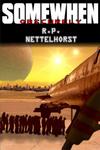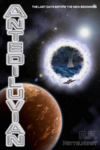Thursday, June 28, 2007
Genesis II, Bigelow Aerospace's second test facility was successfully launched this afternoon on a Russian Dnepr rocket (prior to the end of the Cold War, such missles were ICBMs; now Russia makes money with them). More details are available at the Bigelow Aerospace website: http://www.bigelowaerospace.com/multiverse/news.php#update
The Genesis II is a subscale version (16 feet by 8 feet, inflated) module for what will be a future space station.
The Genesis II is a subscale version (16 feet by 8 feet, inflated) module for what will be a future space station.
Monday, June 11, 2007
Tuesday, June 05, 2007
Armadillo Aerospace (founded and run by the guy who made the Doom games) did a demo launch of his lunar lander; if he does what he did with this test at the XPrize Cup in New Mexico in October, he’ll win a million bucks. The video is here:
Armadillo Lunar Challenge
I thought it was pretty cool; the test vehicle is about as tall as a person. More info here:
Cosmic Log
Meanwhile, the owner and CEO of Amazon.com has his own space program, too:
Blue Origin
There’s video of his vertical take off and landing rocket there, too. Just scroll down and you’ll see where to click.
And, Bigelow Aerospace (owned by the CEO of Budget Suites of America) has a test space station in orbit and plans to launch another one later this month. For more info (pictures and video), go here:
Bigelow Aerospace
Things remain very busy in space. NASA is scheduled to launch the next Shuttle to the International Space Station on Friday, June 8.
Armadillo Lunar Challenge
I thought it was pretty cool; the test vehicle is about as tall as a person. More info here:
Cosmic Log
Meanwhile, the owner and CEO of Amazon.com has his own space program, too:
Blue Origin
There’s video of his vertical take off and landing rocket there, too. Just scroll down and you’ll see where to click.
And, Bigelow Aerospace (owned by the CEO of Budget Suites of America) has a test space station in orbit and plans to launch another one later this month. For more info (pictures and video), go here:
Bigelow Aerospace
Things remain very busy in space. NASA is scheduled to launch the next Shuttle to the International Space Station on Friday, June 8.
Richard Chesnoff of the New York Daily News writes:
Read the rest of the article, A War That Never Ends.
Forty years ago tomorrow, Israel wielded its terrible swift sword against the attack-poised armies of Egypt, Syria and Jordan - and saved the Jewish state from destruction.
It was the Six-Day War, and the fledgling state's stunning victory over enemies determined to annihilate it galvanized the world and changed the Mideast map - perhaps forever.
I was one of the handful of foreign correspondents who reached the front during that monumentally brief battle. I was in Sinai on the first day, then returned north and managed to enter Gaza just as that benighted city was falling to Israel's largely civilian tank corps. Then it was on to Jerusalem.
Like anyone who believes in the justice of Israel's existence, I was deeply relieved by its victory on June 10. I had heard the bloodthirsty Arab threats of a new Holocaust. I had seen the "Kill the Jews" posters in Gaza schools. I had seen the bunkers and mass graves that Israel had been forced to dig in expectation of invasion, if not defeat.
Yet, as we mark its 40th anniversary, it's become fashionable in some circles to rewrite the history of the Six-Day War. Radicals, so-called "humanitarians" and others who love to hate Israel now claim that what was essentially a war for survival was in fact just an excuse for Zionist imperialism. Even serious journals like Britain's The Economist say that while the war may have been necessary, it has ultimately proven "a calamity for the Jewish state."
How ridiculous! Despite the seemingly insoluble problems that have arisen over the past four decades - not the least of them, Israel's continuing rule over occupied territories and a million-plus hostile Palestinians - the war was not only necessary, it was one of Israel's finest hours.
Read the rest of the article, A War That Never Ends.
Subscribe to:
Posts (Atom)




